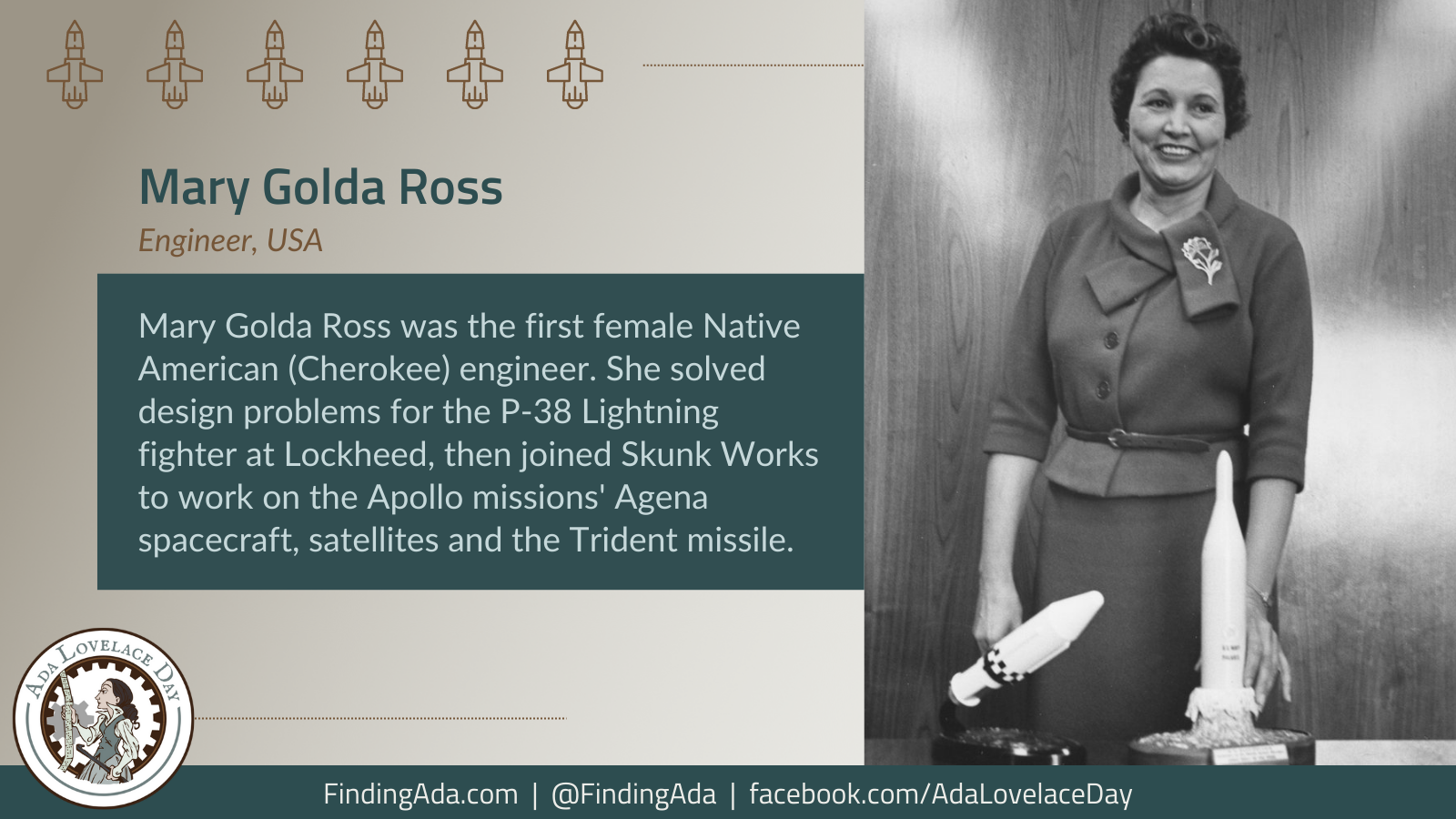
Mary Golda Ross
Mary Golda Ross (1908-2008) was the first female engineer to work at the Lockheed Corporation, as well as the first female Native American engineer.
As a child, she lived with her grandparents so she could go to school, after which she attended Northeastern State Teachers’ College where she earned a degree in Maths. A decade later, she attended Colorado State Teachers College to complete her Masters degree in maths, where she additionally took several astronomy modules. During the Great Depression, she worked in schools as a maths and science teacher before applying to the Bureau of Indian Affairs (BIA), to work as a statistical clerk. She then became an advisor to girls at Santa Fe Indian School.
During World War II, her father advised Golda Ross to find work in California, where she was hired by Lockheed to work as a mathematician. She started working on some design problems with the P-38 Lightning fighter plane, to ensure that it could withstand its high speed. Lockheed were pleased with her work and sent her to UCLA so she could attain professional engineering qualifications for aeronautics and missiles. Despite many companies letting go of their female staff once the war had finished, Golda Ross was kept on at Lockheed, and was invited to join a top-secret project, Skunk Works, the only female mathematician to take part.
In Skunk Works, she worked on space travel designs and operational designs, including the Agena-B spacecraft, which later was used for the Apollo missions. Additionally, she worked ideas on potential flights to Mars and Venus, and wrote the NASA Planetary Flight Handbook III. Much of this work is still classified. Towards the end of her career, she worked on the Polaris re-entry vehicle, and the missiles, Poseidon and Trident.
Golda Ross was a strong supporter of young women and Native Americans in engineering, including American Indians in Science and Engineering Society and the Council of Energy Resource Tribes, and was also a member of the Society of Women Engineers. She participated in a parade of Native Americans at the National Museum of the American Indian, wearing a traditional Cherokee dress, and bequeathed $400,000 to the museum in her will. She died in 2008 and in 2022 was honoured with a statue in celebration of International Day of Women and Girls in Science.
Further Reading
- Mary Golda Ross, Wikipedia
- Meet the Little-Known Math Genius Who Helped America Reach the Stars, Erin Blakemore, Smithsonian Magazine, 29 March 2017
- Mary G. Ross’ 110th Birthday, Google Doodle, 9 August 2018
- Mary Golda Ross: She Reached for the Stars, Dr Herman Viola, American Indian Magazine, Winter 2018
- 2019 Native American $1 Coin, United States Mint, 2019
- Mary Golda Ross and the Skunk Works, The National WWII Museum, 19 November 2021
- The Cherokee Woman Who Changed the Aerospace Game Forever, Harper’s Bazaar, 11 February 2022
- Mary Golda Ross, the First Known Native American Female Engineer, Is Being Honored With a New Statue, Madison Feller Elle, 11 February 2022
- Mary Golda Ross: The First Native American Aerospace Engineer and Space Race Pioneer, A Mighty Girl, 9 August 2022